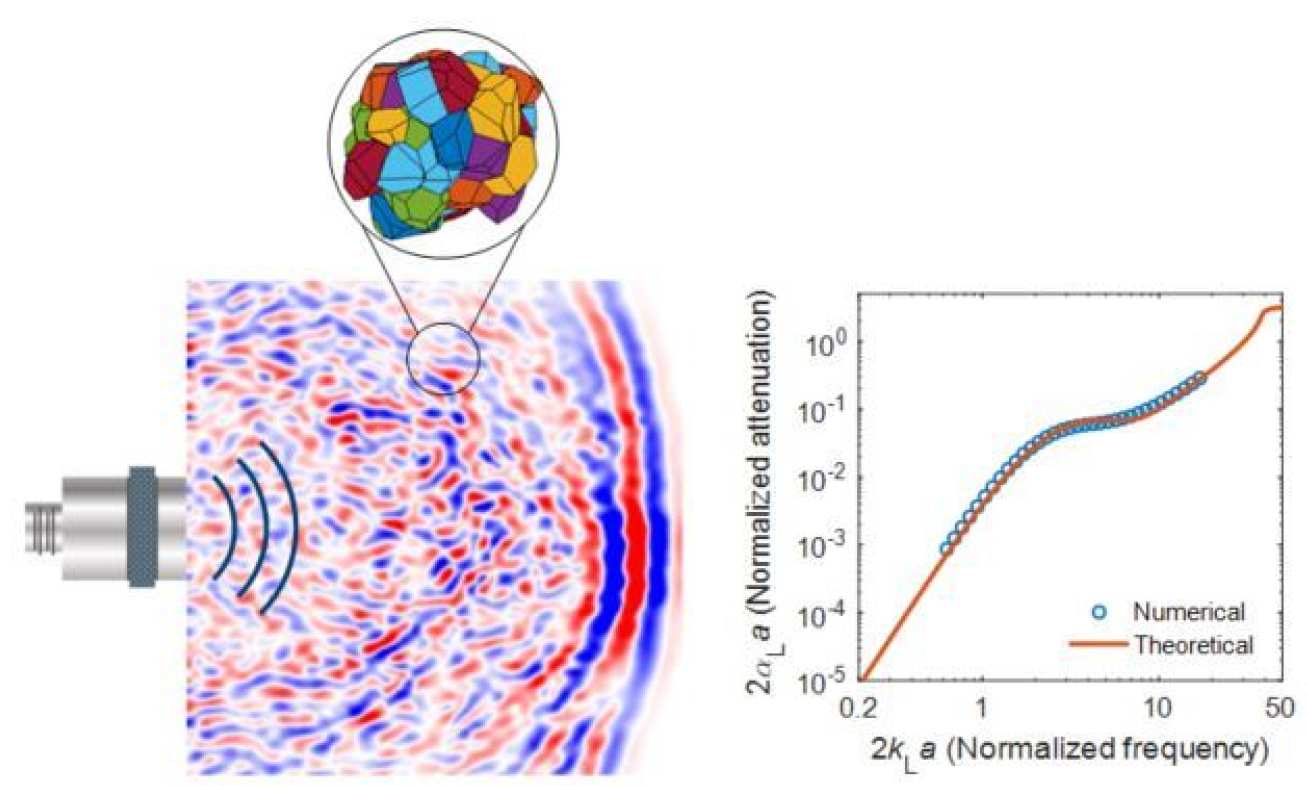Ultrasound Characterisation of Microstructure of Polycrystals
|
Polycrystalline materials are being widely used in safety-critical engineering components. Many of their macroscopic properties are largely affected by microstructure. It is thus essential to characterize microstructure to achieve quality control. Ultrasound scatters in polycrystals due to impedance mismatch on grain boundaries. Scattering-induced behaviours, like attenuation and dispersive phase velocity, in turn carry grain-scale microstructure information. We aim to use this link to inversely extract microstructure information from scattering behaviours. We have studied the quantitative link between scattering behaviours and microstructural parameters, using accurate three-dimensional finite element models. The results have been put into forward theoretical models to evaluate their approximations. We have found that the theoretical models agree very well with accurate finite element simulations for a variety of parameters, including the symmetry and anisotropy of individual grains, and the size and shape statistics of grain aggregates. The theoretical models will thus be used as the basis to develop a method for the inversion of microstructure in the next step. |



